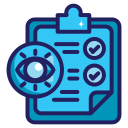Visual Story Mapping for Clean, Negotiable Backlogs
Begin with the user’s end-to-end goal, then lay out activities and slices. In a payments product, mapping the refund journey revealed two must-have capabilities hidden inside edge cases. Comment with your most surprising discovery from a story map session.
Visual Story Mapping for Clean, Negotiable Backlogs
Color-coding MVP slices helps teams avoid shipping half-finished features. One team used blue for essentials and gray for later—velocity stabilized as scope stopped shapeshifting. Want our color legend template for refinement? Subscribe and we’ll send the guide.
Visual Story Mapping for Clean, Negotiable Backlogs
When everyone sees the journey, trade-offs feel rational, not political. A product owner used a visible cut line to negotiate scope without drama. Which slice would you ship first if time halved tomorrow? Share your reasoning and we’ll feature top answers.


